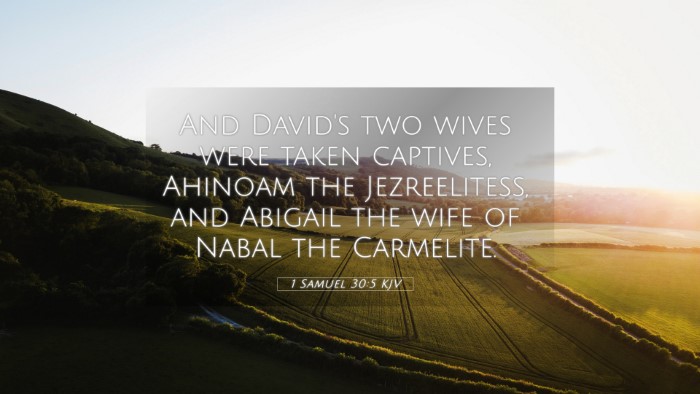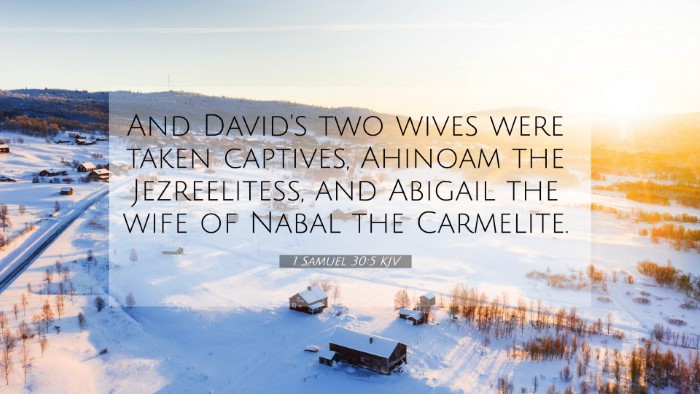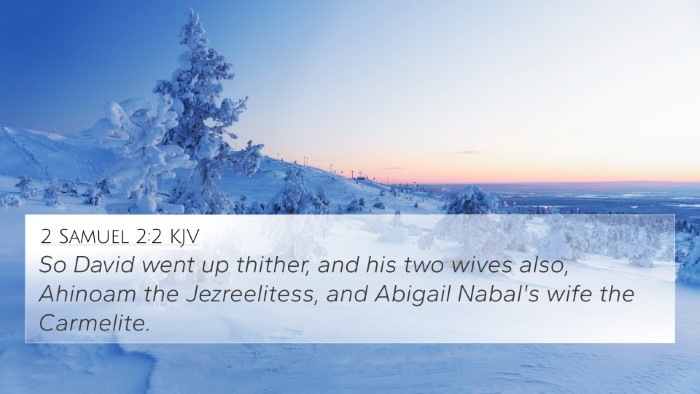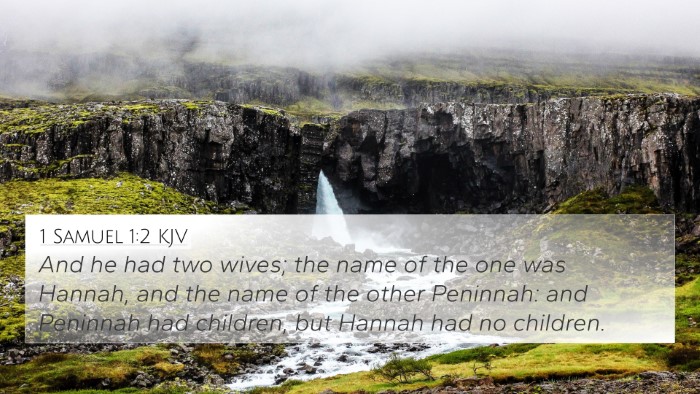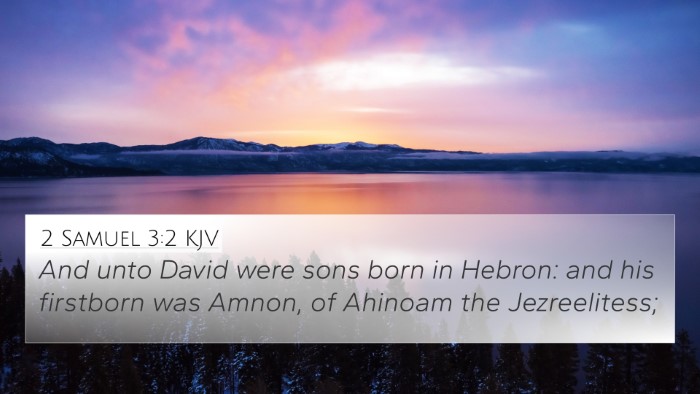Exploring the Meaning of 1 Samuel 30:5
Bible Verse: "And David's two wives were taken captive, Ahinoam the Jezreelitess, and Abigail the wife of Nabal the Carmelite." - 1 Samuel 30:5
Contextual Overview
The verse occurs in a poignant moment in David's life as he returns to Ziklag to find that the Amalekites have raided the city, burned it with fire, and taken captive all the inhabitants. This narrative sets the stage for both David's emotional distress and eventual victory.
Commentary Insights
The following insights from respected public domain commentaries help to illuminate this scripture:
- Matthew Henry: Matthew Henry emphasizes the emotional turmoil faced by David during this incident. He notes that the mention of David's wives underscores the deep personal loss he experienced, reflecting on the broader themes of loss and recovery in our spiritual journey.
- Albert Barnes: Barnes provides a historical context around the captivity, highlighting the perilous position of David amidst his foes. He asserts that this loss was both a personal tragedy and a significant moment in David's rise to leadership, demonstrating the intertwining of personal suffering and divine purpose.
- Adam Clarke: Clarke points out the significance of the names of David's wives, indicating a reflection of David’s character. The emotional implications of their captivity extend beyond mere loss—there's an underlying spiritual lesson in the loyalty and the consequences of leadership responsibilities.
Bible Verse Cross-References
This verse is interwoven with several other scriptures that provide depth and clarity through thematic Bible verse connections. Here are some relevant cross-references:
- 1 Samuel 25:39-42: This passage refers to David's marriage to Abigail, providing context for her significance in David's life.
- 2 Samuel 2:2: This verse illustrates David's eventual anointing as king and acknowledges his family dynamics as a part of his leadership journey.
- Psalm 34:18: David's intimate connection with God during times of distress is evident in this verse, which resonates with his emotional state in 1 Samuel 30:5.
- Genesis 16:1-2: This scripture regarding Hagar relates to the theme of familial tensions and the consequences of hasty decisions—complementing the narrative surrounding David’s wives.
- Proverbs 17:17: The importance of friendship and support in times of trouble resonates with David's experience and the loyalty of those who stood with him.
- Isaiah 61:3: This verse connects to the themes of mourning and the ultimate promise of restoration—parallels to David's distress and his recovery.
- Luke 7:14-15: The parallels between David's distress and the New Testament themes of restoration and divine intervention are highlighted here.
Connecting Thematic Elements
The thematic connections within the scripture demonstrate how personal loss can coincide with God’s purpose, thereby enriching our understanding of both the Old and New Testaments:
- Loss and Healing: Both the Old Testament accounts of David and the New Testament assurances of healing highlight God’s ongoing work in believers' lives.
- Leadership and Responsibility: The way David handled personal tragedy illustrates significant lessons in leadership, resonating through various biblical texts.
- Endurance through Trials: Numerous verses emphasize bravery and perseverance through tough times, including David's story as a precedent for faith in tribulation.
How to Use Bible Cross-References Effectively
Engaging with the Bible using a cross-reference system deepens understanding. Here are tools for Bible cross-referencing:
- Bible Concordance: Explore a concordance to identify connections between themes and ideas.
- Bible Cross-Reference Guide: Utilize guides that offer structured ways to explore links between verses.
- Cross-Referencing Bible Study: Implement study methods that focus on thematic analysis across scripture.
Conclusion
This verse encapsulates a critical moment in David's life, inviting readers to reflect on themes of loss, recovery, and the overarching plans of God. Through cross-referencing related verses, one can draw connections that enrich the understanding of scripture as a whole, demonstrating the interconnected nature of biblical narratives.

